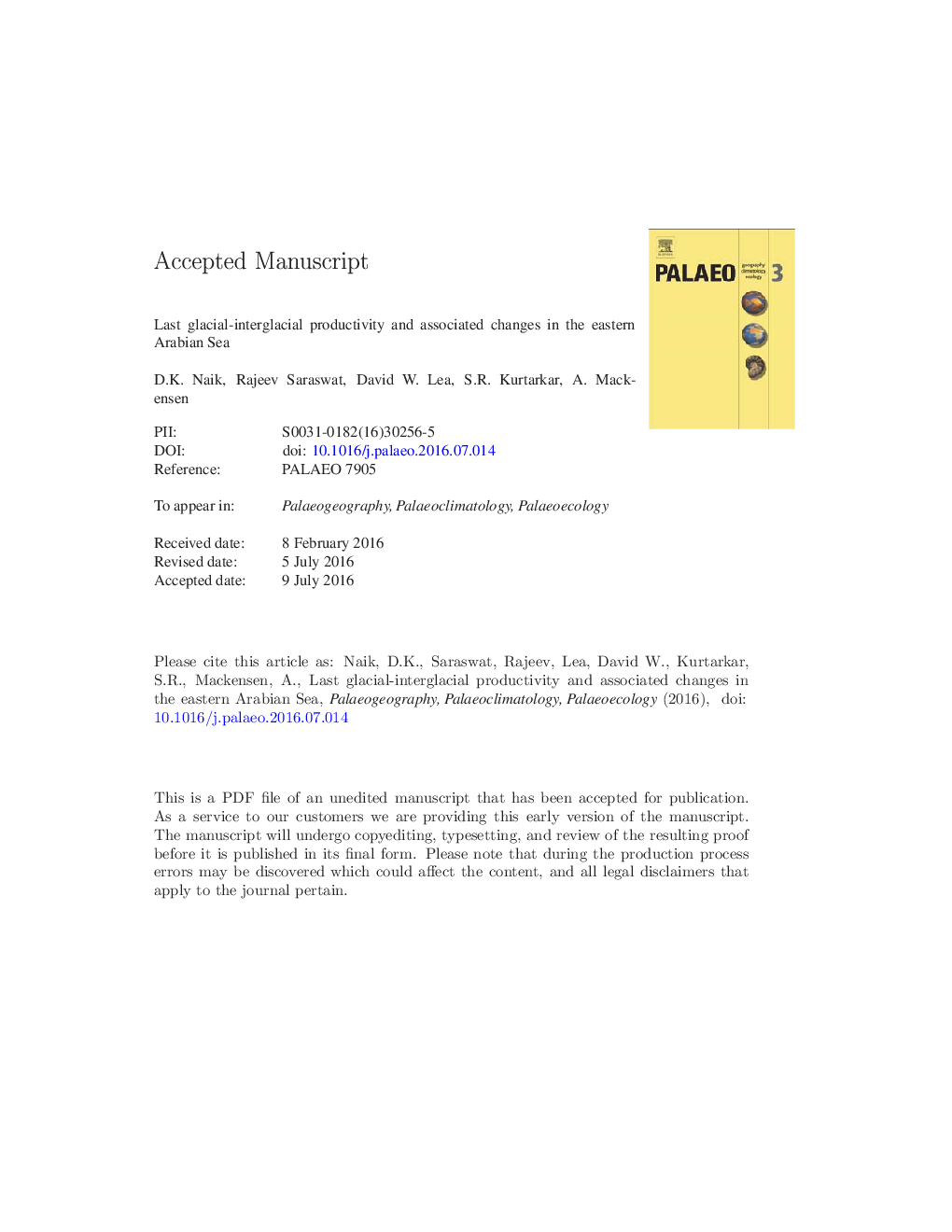| Article ID | Journal | Published Year | Pages | File Type |
|---|---|---|---|---|
| 5755648 | Palaeogeography, Palaeoclimatology, Palaeoecology | 2017 | 47 Pages |
Abstract
We reconstruct paleo-productivity and bottom water oxygenation changes during the past 32 ka, from the southeastern Arabian Sea, using absolute abundance of planktic foraminifera, relative abundance of Globigerina bulloides, angular asymmetrical benthic foraminifera (AABF), measurements of total organic carbon (Corg), %CaCO3, and Globigerinoides ruber δ18O and δ13C. The faunal and geochemical proxies suggest that productivity in the southeastern Arabian Sea was high during MIS 3. A distinct decrease in productivity is inferred during the last glacial maximum (19-23 ka) (LGM). Bottom water was well oxygenated during MIS3, only to become oxygen-depleted during the LGM. Productivity decreased abruptly during Heinrich Stadial 1 (HS-1), but the response to Heinrich Stadial 2 (HS-2) was different. Low productivity during the early deglaciation is also synchronous with an increase in ice-volume corrected δ18O (δ18Osw-ivc), a salinity proxy, between 18.9 (18.3-18.9) ka BP and 15.9 (15.0-16.3) ka BP, and a concomitant decrease in δ13C between 18.2 (17.5-18.7) ka BP and 16.4 (15.3-16.7) ka BP. These patterns suggest that the global δ13C minimum event during the last deglaciation was associated with the weak monsoon interval during HS-1 and a drop in productivity in tropical regions. A progressive increase in productivity is observed throughout the Holocene, with a distinct jump at 5.4 (3.8-6.3) ka BP. We infer that although productivity was higher in the eastern Arabian Sea during most of the last glacial interval, the overall resultant carbon sequestration was confined only to a restricted zone and not large enough to substantially alter atmospheric CO2.
Related Topics
Physical Sciences and Engineering
Earth and Planetary Sciences
Earth-Surface Processes
Authors
D.K. Naik, Rajeev Saraswat, David W. Lea, S.R. Kurtarkar, A. Mackensen,
